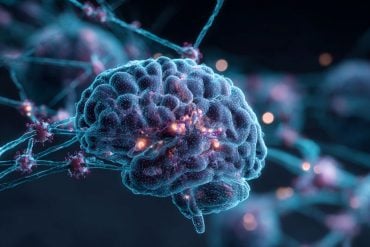Summary: New research shows that sleep deprivation during early development disrupts brain function, impacting neuron growth and synapse formation. The study found that young mice lacking sleep did not experience the “sleep rebound” seen in adults, leading to lasting deficits in social behavior and memory.
These effects were especially significant in mice with a genetic predisposition for autism spectrum disorder (ASD). The findings highlight the critical role sleep plays in brain development and suggest potential treatment avenues for ASD by targeting synapse restoration.
Key Facts:
- Sleep deprivation in early life disrupts synapse formation and brain development.
- Young mice lacking sleep were more vulnerable to social and cognitive deficits.
- Research suggests sleep-based treatments may help address ASD and developmental disorders.
Source: UNC Health Care
Sleep deprivation in adults has long been proven to cause long-term mental and physical health issues, including, but not limited to, weakened immune systems, weight gain, depression, and increased risk of dementia.
But why does lack of sleep have such steep consequences?
Sleep actually plays a crucial role from the moment we are born. As babies, our brains are still forming the ends of neurons, called synapses, that are important in learning, attention, working memory, and long-term memory.

Sleep allows these neurons to develop and connect with one another, establishing brain functions for the remainder of life.
If this delicate, but important process was to be disrupted either through constant waking or separation anxiety, it could have lasting effects on the brain and behavior.
Now, a new study led by Sean Gay, a graduate student in the lab of Graham Diering, PhD, assistant professor in the Department of Cell Biology and Physiology at the UNC School of Medicine, has given us more insights into how sleep loss during early life impacts key parts of brain development – and how it can also increase one’s risk for developing autism spectrum disorder (ASD).
Their findings were published in the Proceedings of the National Academy of Sciences.
“The unique effects of sleep loss during development are largely unexplored,” said Diering.
“Our data show that babies and children are more vulnerable to the negative effects of sleep disruption. We also found that sleep loss during this crucial period of time can negatively interact with underlying genetic risk for autism spectrum disorder.”
Sleep Disruption and Autism
Sleep issues are an important early indicator of brain growth issues and other neurodevelopmental disorders, such as ASD, attention-deficit hyperactivity disorder, and intellectual disability. Sleep disruption has been noted in >80% of people with ASD, but whether sleep disruption is a cause or consequence of ASD is largely unknown.
Diering has long studied how sleep strengthens synapses over time – a process termed synaptic plasticity – and how lack of sleep can contribute to cognitive and neurodegenerative disorders.
If researchers could better understand the links between sleep and ASD, researchers and physicians also could make earlier diagnoses and come up with new treatment strategies for the disorder.
In 2022, the Diering lab sought to understand if sleep disruption during early life could interact with underlying genetic risk for ASD to cause long-lasting changes in adult behavior.
Using mouse models, researchers found that sleep disruption during the third week of life (similar to age 1-2 in humans) caused long-lasting deficits in social behavior in male mice that were genetically vulnerable for having ASD.
A Study on Sleep Rebound
The Diering lab wanted to explore these findings further, this time diving into how adult and developing mouse models compensate for sleep loss. Using specialized mouse houses with highly sensitive sensors, researchers were able to carefully track mouse movements and breathing, allowing the researchers to keep score of wake and sleep states.
Researchers showed that when the adult mouse models lost a significant amount of sleep, they compensated for it by increasing sleep later during their regular active hours. Termed “sleep rebound”, this response allowed the adults to “make up” for lost sleep.
The younger mice; on the other hand, lacked sleep rebound entirely. This confirmed the researcher’s hypothesis that the younger mice might be more susceptible to the harmful effects of sleep deprivation.
Researchers also noted that sleep deprivation in young mice completely impaired their performance in a learning memory task, whereas adults were far more resilient after sleep loss.
Next, the lab shifted its attention to the effects of sleep and sleep deprivation on neuronal synapses, which mediate communication between neurons and are the main location for memory formation and storage. They are also well-studied for their pivotal role in benefiting sleep health.
Researchers performed a number of molecular analyses to look at how sleep deprivation affects synapses. Using cutting-edge protein analysis, they were able to map the protein composition and biochemical changes that affect synapses. The analysis showed that sleep deprivation in young mice, but not adults, strongly affected synapse formation, a key aspect of brain development.
“This now provides one of the largest and most comprehensive datasets to examine the molecular effects of sleep loss across the lifespan,” said Diering.
Future Treatment Avenues for Autism
An ongoing mission of the lab, informed through the molecular work of this current study, is to develop next generation sleep-based medicines that could be used in children. Instead of acting as a sedative, they hope to create a drug that can target synapses to restore sleep function, rather than altering sleep behavior itself.
“Development is not something that one can go back and do again,” said Diering.
“Sleep is important for the entire life and especially during development. Understanding what we know now will place greater emphasis on understanding sleep issues in ASD and could lead to an important therapeutic avenue to treat ASD and other developmental conditions.”
About this sleep and neurodevelopment research news
Author: Kendall Daniels
Source: UNC Health Care
Contact: Kendall Daniels – UNC Health Care
Image: The image is credited to Neuroscience News
Original Research: Closed access.
“Developing forebrain synapses are uniquely vulnerable to sleep loss” by Sean Gay et al. PNAS
Abstract
Developing forebrain synapses are uniquely vulnerable to sleep loss
Sleep is an essential behavior that supports lifelong brain health and cognition. Neuronal synapses are a major target for restorative sleep function and a locus of dysfunction in response to sleep deprivation (SD).
Synapse density is highly dynamic during development, becoming stabilized with maturation to adulthood, suggesting sleep exerts distinct synaptic functions between development and adulthood.
Importantly, problems with sleep are common in neurodevelopmental disorders including autism spectrum disorder (ASD). Moreover, early life sleep disruption in animal models causes long-lasting changes in adult behavior.
Divergent plasticity engaged during sleep necessarily implies that developing and adult synapses will show differential vulnerability to SD.
To investigate distinct sleep functions and mechanisms of vulnerability to SD across development, we systematically examined the behavioral and molecular responses to acute SD between juvenile (P21 to P28), adolescent (P42 to P49), and adult (P70 to P100) mice of both sexes.
Compared to adults, juveniles lack robust adaptations to SD, precipitating cognitive deficits in the novel object recognition task. Subcellular fractionation, combined with proteome and phosphoproteome analysis revealed the developing synapse is profoundly vulnerable to SD, whereas adults exhibit comparative resilience.
SD in juveniles, and not older mice, aberrantly drives induction of synapse potentiation, synaptogenesis, and expression of perineuronal nets.
Our analysis further reveals the developing synapse as a putative node of convergence between vulnerability to SD and ASD genetic risk.
Together, our systematic analysis supports a distinct developmental function of sleep and reveals how sleep disruption impacts key aspects of brain development, providing insights for ASD susceptibility.






